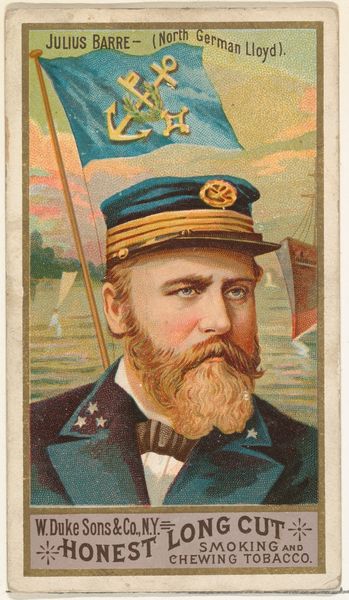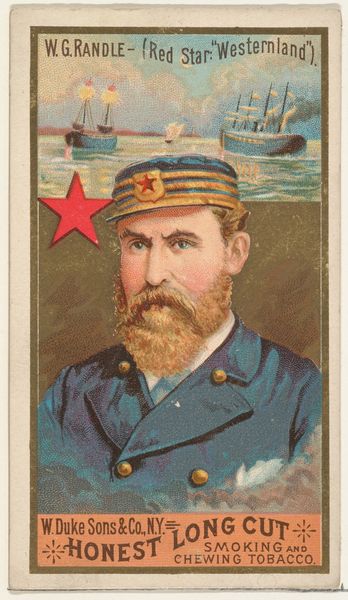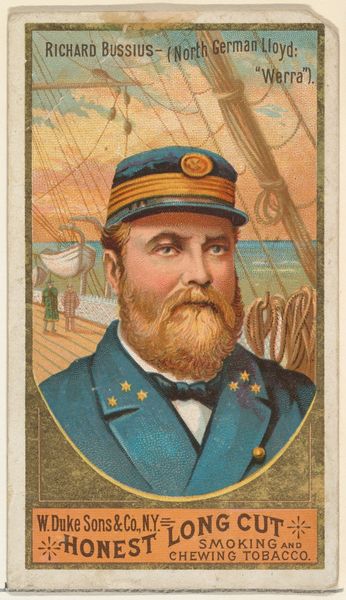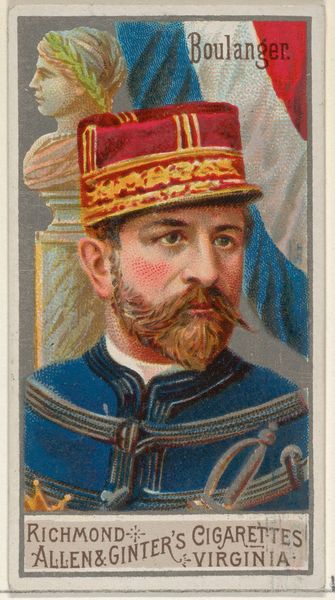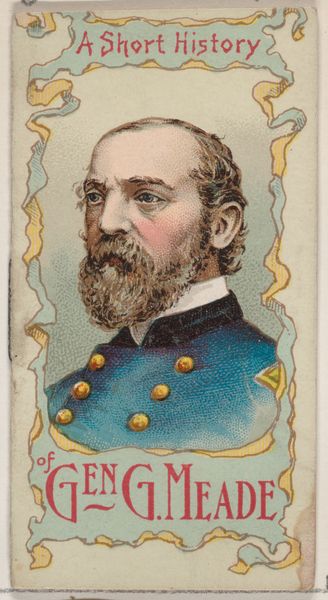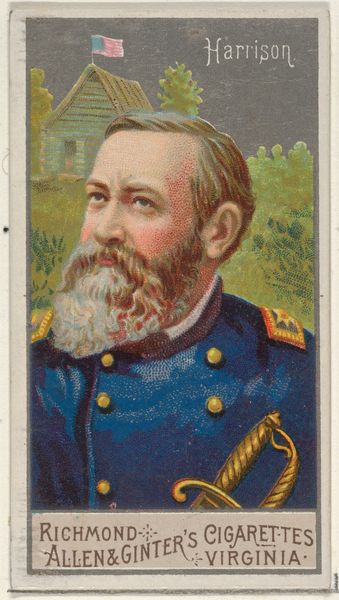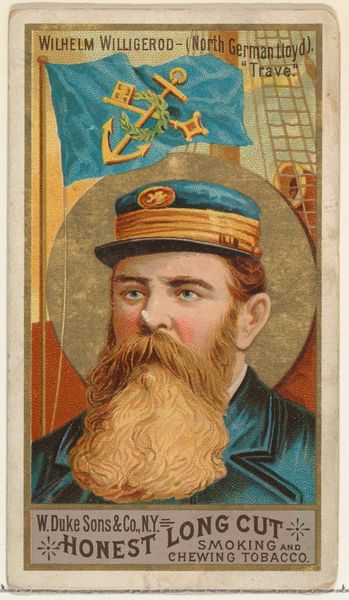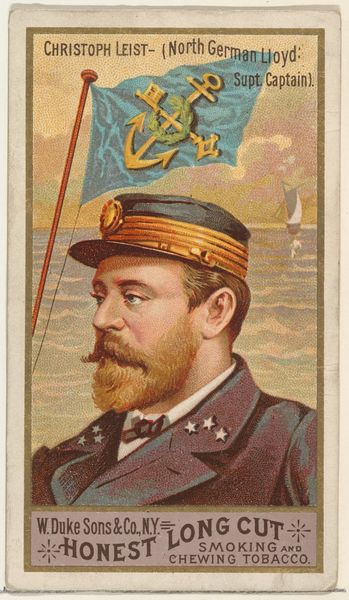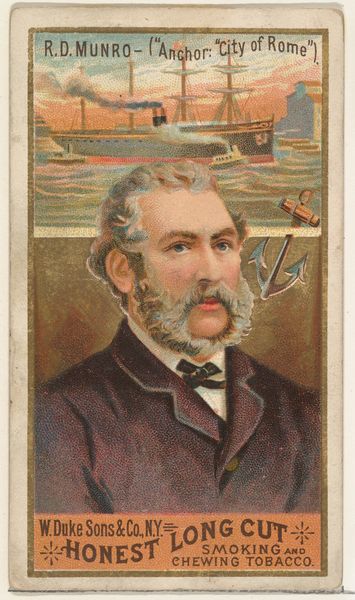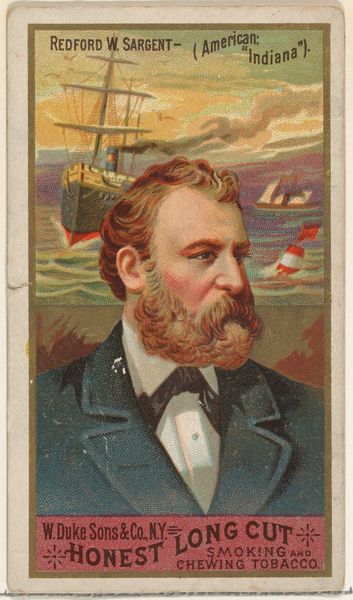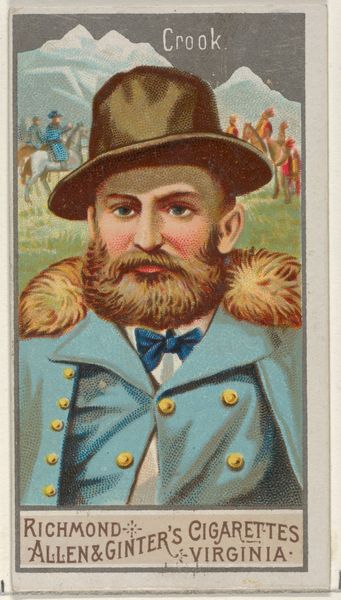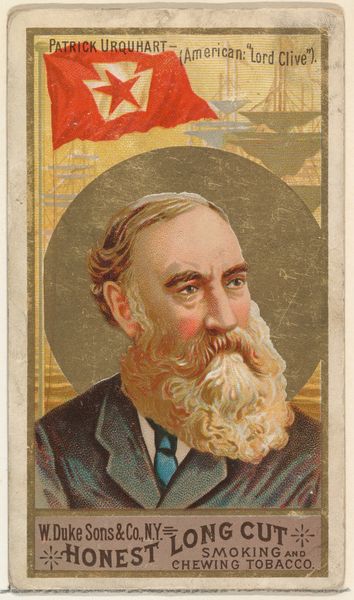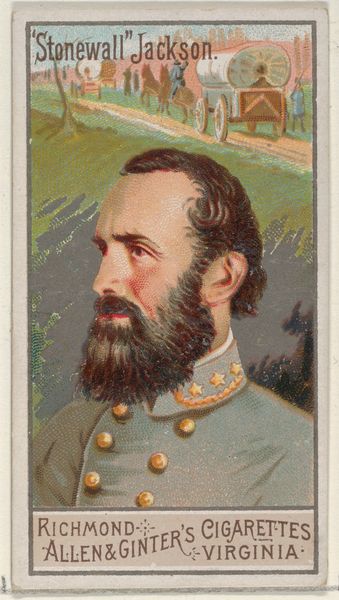
Frederick Watkins, from the Sea Captains series (N127) issued by Duke Sons & Co. to promote Honest Long Cut Tobacco 1887
0:00
0:00
drawing, lithograph, print, photography, poster
#
portrait
#
drawing
#
16_19th-century
#
lithograph
# print
#
caricature
#
photography
#
19th century
#
men
#
watercolour illustration
#
poster
#
portrait art
Dimensions: Sheet: 4 3/16 × 2 7/16 in. (10.7 × 6.2 cm)
Copyright: Public Domain
Editor: So, this is a lithograph print from 1887 by W. Duke, Sons & Co. It's a portrait of Frederick Watkins from the Sea Captains series, originally made to promote Honest Long Cut Tobacco. There’s something almost… melancholy about his expression. What stands out to you in this piece? Curator: Immediately, I'm struck by the intersection of commerce and representation. This isn't just a portrait; it's a carefully constructed image embedded in a larger system of 19th-century capitalism and its glorification of certain masculine ideals. What does it mean to link a 'sea captain', an archetype of masculine strength and authority, to tobacco consumption? Who is this ideal serving, and who is excluded from it? Editor: So it’s not just a portrait of Captain Watkins, it’s part of a larger narrative? Curator: Exactly. Consider the context. The late 19th century witnessed a boom in mass media and advertising. Cigarette cards became incredibly popular. These images often promoted specific ideologies. Who was Duke, Sons & Co targeting with these images? The "honest" worker aspiring to this ideal of the capable, authoritative sea captain, but also one inextricably linked to tobacco consumption. Editor: It seems like it created aspiration, like tobacco and the 'sea captain' persona went hand in hand... Curator: Precisely. Think about the implications of linking "honesty" to tobacco use. It normalises, it celebrates. Whose voices are missing from this narrative? Those who suffer from addiction, perhaps? It prompts questions about whose stories get told and whose get erased in these commercialised depictions of success. How did they contribute to creating that kind of 'manly' identity? Editor: That connection between tobacco use, masculinity and the notion of "honesty" feels quite jarring today. Curator: It should. Examining art within its socio-political framework unveils those hidden layers of meaning and encourages us to critique the values these images perpetuate. These cards acted as little pieces of propaganda that cemented societal ideals. Now, looking at Captain Watkins himself, do you get a better grasp on how it served the advertisement campaign? Editor: Absolutely. This has totally transformed how I see the portrait. The Captain himself is almost secondary to the message it pushes. Curator: Exactly, this opens doors to seeing art’s powerful but sometimes insidious effect within culture, a concept that is worth keeping in mind when analysing it.
Comments
No comments
Be the first to comment and join the conversation on the ultimate creative platform.

